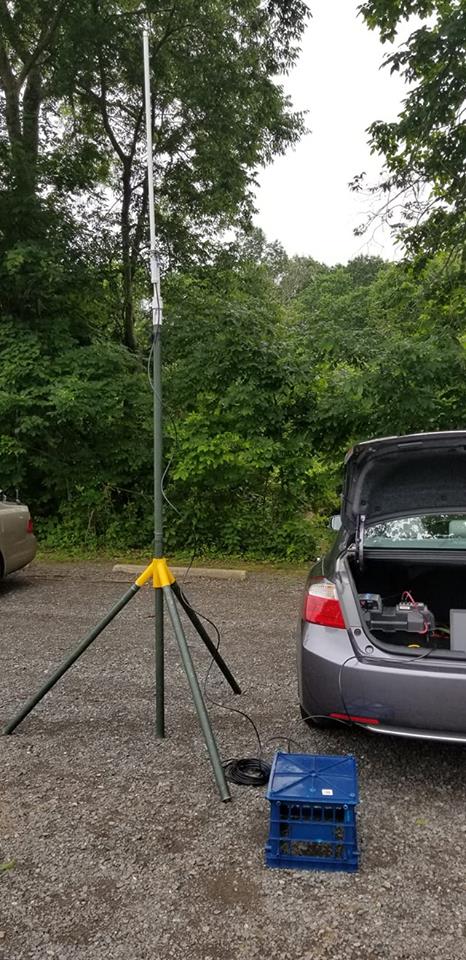It's difficult to separate ham radio from computers these days. Mesh networking is a fascinating combination of the two where we use low-cost commercial WiFi equipment originally designed for Part 15 operations and repurpose it for Part 97 operations. This creates a self-discovering, self-configuring, self-advertising, and fault-tolerant network for public service, emergency service, and experimentation. This gets us around the power and antenna restrictions that limit the range of Part 15 devices but also introduces restrictions on encrypted internet traffic. Read a broad, but a little dated, overview about networking with limited infrastructure at the WNDW web site.
I created two mesh nodes with a couple of old Linksys WRT54GL wireless routers and the version 3.1.0 firmware from the Broadband-Hamnet (BBHN) HSMM-MESH web site. These two nodes, N8IK-N1 and N8IK-N2, used a common SSID and were located at the west end of Alexandria, Virginia in grid FM18kt. As with all older 2.4 GHz mesh nodes, they were on WiFi Channel 1. You could see the SSID with your smartphone but you couldn't, by design, connect with a normal WiFi adapter. These nodes have been retired.
Presently, the alternative to BBHN is the very active Amateur Radio Emergency Data Network (AREDN). AREDN uses Ubiquiti, TP-Link, GL-iNet, and MikroTik commercial-grade hardware in the exclusive Part 97 spectrum to eliminate interference from Part 15 devices. In the 2.4 GHz band, channels below WiFi Channel 1 are used and referred to as Channels -1 and -2. AREDN has a lot of traction and the BBHN web site has not been updated recently, so it looks like AREDN is the choice going forward. Click here for a simple way to create an AREDN mesh node for well under $200.
